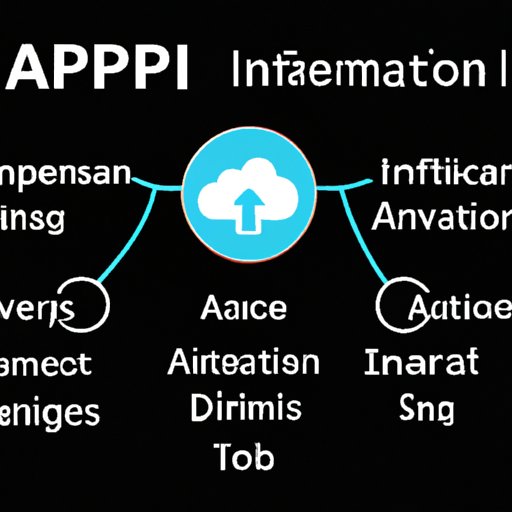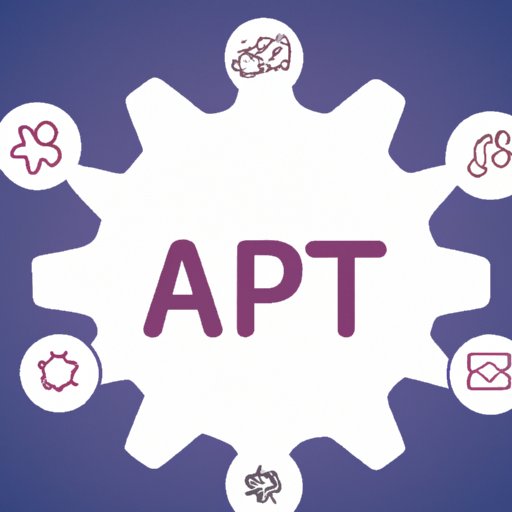Introduction
APIs (application programming interfaces) have become an important part of modern information technology (IT). But what is an API in IT? In this article, we’ll explore the basics of APIs in IT, from what they are to how they work, and discuss the benefits and challenges of using APIs. We’ll also provide a comprehensive guide to developing and implementing APIs in IT.
Who should read this article? This article is aimed at IT professionals who want to learn more about APIs and their role in modern IT. It’s also suitable for non-technical readers who are interested in learning the basics of APIs in IT.
A Beginner’s Guide to Understanding APIs in Information Technology
Let’s start by looking at what APIs are and how they work. An API is a set of protocols, routines, and tools that enable two applications to interact with each other. Put simply, an API is a way for two different programs to communicate with each other. The API defines the rules for how one application can access the data from another application.
When an application wants to access data from another application, it sends a request via the API. The API then processes the request, retrieves the requested data, and sends it back to the requesting application. The API also handles authentication, so only authorized users can access the data.
Now that we’ve covered the basics of what APIs are and how they work, let’s look at some of the benefits of using APIs in IT.

The Role of APIs in Modern Information Technology
There are many benefits to using APIs in IT. First, they make it easier to access and share data between applications. By using APIs, organizations can quickly and easily integrate data from multiple sources into one system. This makes it easier to analyze data, which can help organizations make better decisions.
APIs also make it easier to develop applications. Instead of building an entire application from scratch, developers can use APIs to access data and services from other applications, which saves time and money. Additionally, APIs can be used to extend an existing application by adding new features or integrating with other systems.
Let’s take a look at some of the most common uses for APIs in IT.
Exploring the Benefits of Using APIs in IT
One of the most common uses for APIs is to create web applications. Web applications use APIs to access data from other websites and services, such as social media platforms, payment processors, and search engines. This makes it easier to create complex web applications without having to build all of the components from scratch.
APIs are also used to create mobile applications. Mobile applications use APIs to access data from the internet, such as weather reports, news stories, and stock prices. APIs can also be used to integrate mobile applications with other services, such as location services and push notifications.
Finally, APIs can be used to create connected devices. Connected devices use APIs to access data from other devices or services, such as temperature sensors, cameras, and remote control systems. This makes it easier to build connected devices that can interact with each other.
Now that we’ve discussed the benefits of using APIs in IT, let’s look at some of the challenges associated with implementing APIs.
What is an API? An Overview for IT Professionals
There are several types of APIs used in IT. The most common type is a web API, which is used to access data from other websites and services. There are also mobile APIs, which are used to access data from mobile devices, and device APIs, which are used to access data from connected devices.
In addition to these types of APIs, there are also SOAP (Simple Object Access Protocol) and REST (Representational State Transfer) APIs. SOAP APIs are used to access data from web services, while REST APIs are used to access data from web applications. Both types of APIs use HTTP requests to send and receive data.

A Comprehensive Guide to Developing and Implementing APIs in IT
Developing an API is a complex process that requires a deep understanding of software development and web technologies. The first step is to define the purpose of the API and determine the data that will be exposed. Once this is done, the API needs to be designed and built. During this process, security measures must be implemented to ensure that only authorized users can access the data.
Once the API has been developed, it needs to be tested to ensure that it works as expected. After testing, the API needs to be deployed and integrated with the applications that will be using it. Finally, the API needs to be monitored to ensure that it continues to perform as expected.
When implementing an API, it’s important to consider the performance, scalability, and security of the API. Performance should be monitored to ensure that the API is responding quickly enough to meet the needs of the applications that are using it. Scalability should be monitored to ensure that the API can handle an increase in traffic if needed. Finally, security should be monitored to ensure that only authorized users can access the data.
Conclusion
In this article, we explored what an API is in information technology and discussed the benefits and challenges of using APIs. We also provided a comprehensive guide to developing and implementing APIs in IT. From web and mobile applications to connected devices, APIs are an essential part of modern IT.
By using APIs, organizations can quickly and easily integrate data from multiple sources into one system, making it easier to analyze data and make better decisions. Additionally, APIs can be used to develop applications faster and extend existing applications with new features. However, implementing APIs can be a complex process, and it’s important to consider the performance, scalability, and security of the API.
Key Takeaways
- An API is a set of protocols, routines, and tools that enable two applications to interact with each other.
- APIs make it easier to access and share data between applications, and can be used to develop applications faster and extend existing applications with new features.
- There are several types of APIs used in IT, including web APIs, mobile APIs, device APIs, SOAP APIs, and REST APIs.
- Developing and implementing an API is a complex process, and it’s important to consider the performance, scalability, and security of the API.
(Note: Is this article not meeting your expectations? Do you have knowledge or insights to share? Unlock new opportunities and expand your reach by joining our authors team. Click Registration to join us and share your expertise with our readers.)
